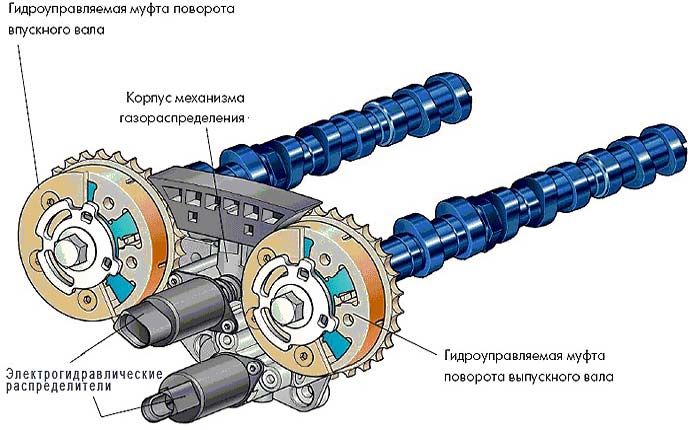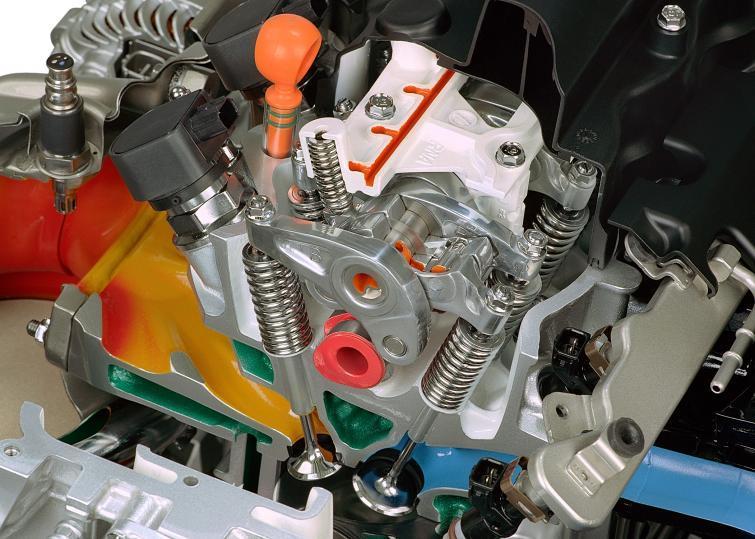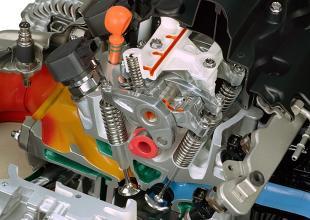
Variable valve timing. What does it give and is it profitable
 The gas distribution system plays a key role in the operation of any engine. The variable valve timing system has become a hit in recent years. What does it do?
The gas distribution system plays a key role in the operation of any engine. The variable valve timing system has become a hit in recent years. What does it do?

The valve timing system (commonly known as gas distribution) is responsible for supplying the pressurized mixture, i.e. the fuel-air mixture, to the cylinder and for discharging exhaust gases into the exhaust passages.
Modern engines use three main types of valve timing: OHV (overhead camshaft), OHC (overhead camshaft), and DOHC (double overhead camshaft).
But besides this, the timing may have a special operating system. One of the most common systems of this type are variable valve timing systems.
ADVERTISING
Optimal combustion
Variable valve timing was invented to obtain better combustion parameters while improving dynamics. Some will say that it has long been known that turbocharging provides a good flow of power.
However, supercharging is a rather expensive solution that leaves fuel economy in the background. Meanwhile, the designers wanted to reduce fuel consumption. This was done by setting the opening angle of one or another valve depending on the engine speed at the moment, as well as on the force of pressing the accelerator pedal.
– Nowadays this solution is increasingly used in all modern designs. It provides better filling of the cylinders with an air-fuel mixture compared to standard solutions, which were optimally designed for the average speed and load of the engine, says Robert Puchala from the Motoricus SA group.
See also: Should you bet on a turbocharged gasoline engine? TSI, T-Jet, EcoBoost
The first variable valve timing system appeared in 1981 on the Alfa Romeo Spider. But only the introduction of this system (after improvement) by Honda in 1989 (the VTEC system) marked the beginning of the world career of the variable valve timing system. Soon similar systems appeared in BMW (Doppel-Vanos) and Toyota (VVT-i).
Some theory
To begin with, let's understand this confusing term - changing the valve timing. We are talking about changing the moments of opening and closing the valves depending on the load of the engine and its speed. Thus, the filling and emptying time of the cylinder under load changes. For example, at low engine speeds, the intake valve opens later and closes earlier than at higher engine speeds.
The result is a flatter torque curve, i.e. more torque is available at lower rpm, which increases the flexibility of the engine while reducing fuel consumption. You can also observe a better response to pressing the gas pedal for units equipped with such a system.
In the Honda VTEC variable valve timing system used in the 90s, two sets of valve cams are located on the shaft. They switch after exceeding 4500 rpm. This system works very well at high speeds, but worse at low speeds. Driving a vehicle powered by this system requires precise shifting.
But the user has a car with an engine of about 30-50 hp. more powerful than units with the same working volume without changing the valve timing. For example, the Honda 1.6 VTEC engine produces 160 hp, and in the standard timing version - 125 hp. A similar system was implemented by Mitsubishi (MIVEC) and Nissan (VVL).
Honda's advanced i-VTEC system was able to improve engine performance at low revs. The design combines cams on the shaft with a hydraulic system that allows you to freely change the angle of the camshaft. Thus, the phases of the valve timing were smoothly adjusted to the engine speed.
Worth reading: Exhaust system, catalytic converter - cost and troubleshooting
Competitive solutions are VVT-i in Toyota models, Double-Vanos in BMW, Super Fire in Alfa Romeo or Zetec SE in Ford. The opening and closing times of the valves are controlled not by sets of cams, but by a hydraulic phase shifter that sets the angle of the shaft on which the cams are located. Simple systems have several fixed shaft angles that change with RPM. More advanced ones change the angle smoothly.
Of course, variable valve timing systems are also found on many other car brands.
Advantages and disadvantages
We have already mentioned the advantages of engines equipped with a variable valve timing system above. This is an improvement in the dynamics of the power unit while optimizing fuel consumption. But like almost any mechanism, the variable valve timing system also has disadvantages.
“These systems are complex, with many parts, and in the event of a failure, repair is difficult, which is associated with significant costs,” says Adam Kowalski, a mechanic from Słupsk.
Even in the case of repairing a conventional timing belt, the cost of repairs can exceed several thousand zł. It must also be taken into account that we will not repair the variable valve timing system in any workshop. Sometimes it remains only to visit an authorized service center. Moreover, the offer of spare parts is not overwhelming.
- The downside is also the cost of buying the car itself, even in the secondary market. They are always more expensive by tens, and sometimes by several tens of percent, than their counterparts without changing the valve timing, the mechanic adds.
Turbo in the car - more power, but more trouble. Guide
Therefore, in his opinion, someone needs a car only for the city, it is unlikely that it will be possible to take advantage of a car with an engine with variable valve timing. “City distances are too short to enjoy dynamics and reasonable fuel consumption,” says Adam Kowalski.
Mechanics advise, in order to avoid unpleasant consequences and considerable costs after the valve fails, several general rules should be observed.
“If we buy a used car without being sure about its service history, we must first replace the timing belt with tensioners and water pump, of course, if it is driven by a belt,” says Robert Puchala from Motoricus SA. Group.
